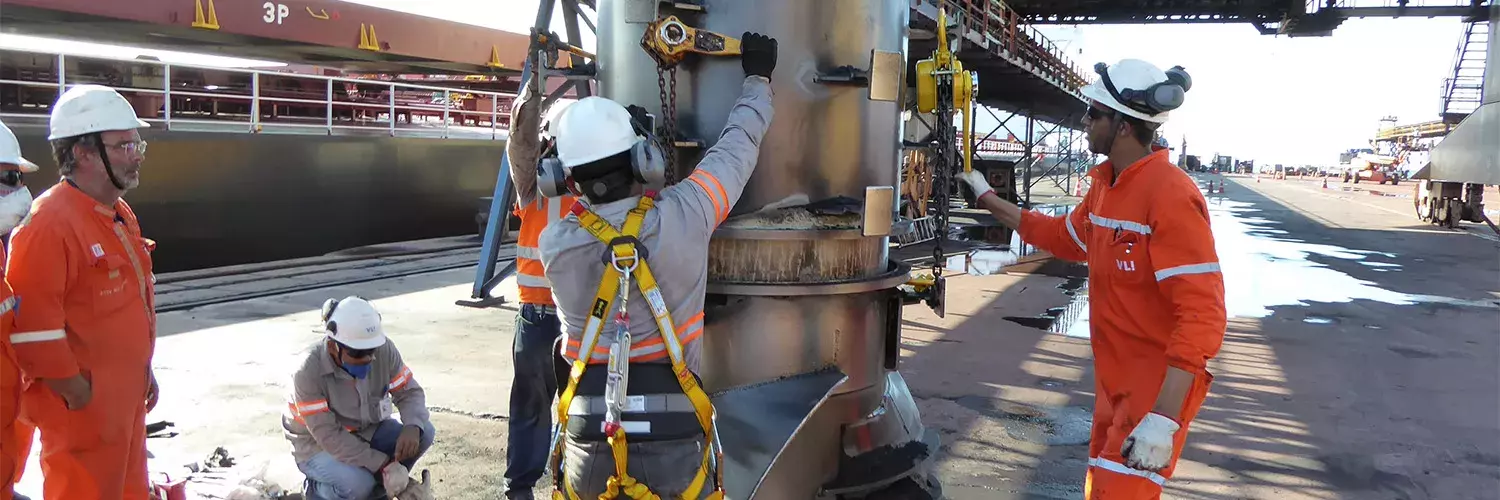mechanical training programs
Bruks Siwertell carries out customized mechanical training programs for Siwertell ship unloaders. The main purpose of these programs is to train personnel so that they are qualified to follow the machine’s maintenance manual recommendations correctly and maintain a ship unloader in an optimum way to extend its service life and ensure peak efficiency. They also aim to smooth and improve start-up procedures, minimizing the time it takes to bring equipment online.
The condition of a ship unloader depends on how well the maintenance schedule is followed and a good working knowledge of critical and wear parts, their service life expectancy, and their timely replacement.
Description
To deliver a broad knowledge base, the programs consist of both theoretical classroom-based learning and practical hands-on training on site. They cover topics including mechanical, hydraulic and lubrication system overviews, and troubleshooting. Also included is instruction on how to use the Siwertell Monitoring system (SiMon), if applicable.
Main content: Mechanical, hydraulic and lubrication system overviews, General inspection guidelines, Preventative maintenance schedule, Critical and wear parts and their service life expectancy, Replacement of critical and wear parts, Unloader operation, vertical arm position and working angles, Safety training, Troubleshooting. Typically, a Siwertell unloader training program is conducted over five days and the optimal group size is up to eight trainees. The content and depth of the program can be adapted according to a customer’s knowledge and requirements. Training manuals for use during the program are customized specifically for each project.
benefits
- Extended service life of machinery
- Unloader runs at peak efficiency
- Reduced downtime
- Faster, more effective troubleshooting and service
- Qualified, knowledgeable maintenance personnel
- Spare parts stock adapted to customer’s needs
scope of supply
- Evaluation of an unloader’s electrical system history to ensure future optimal use of equipment
- Preparation of all training material
- Theoretical and practical on-site training sessions
- Learning assessment of participants
- Qualification certificates
- Full training report
 Bruks-Siwertell
Bruks-Siwertell

